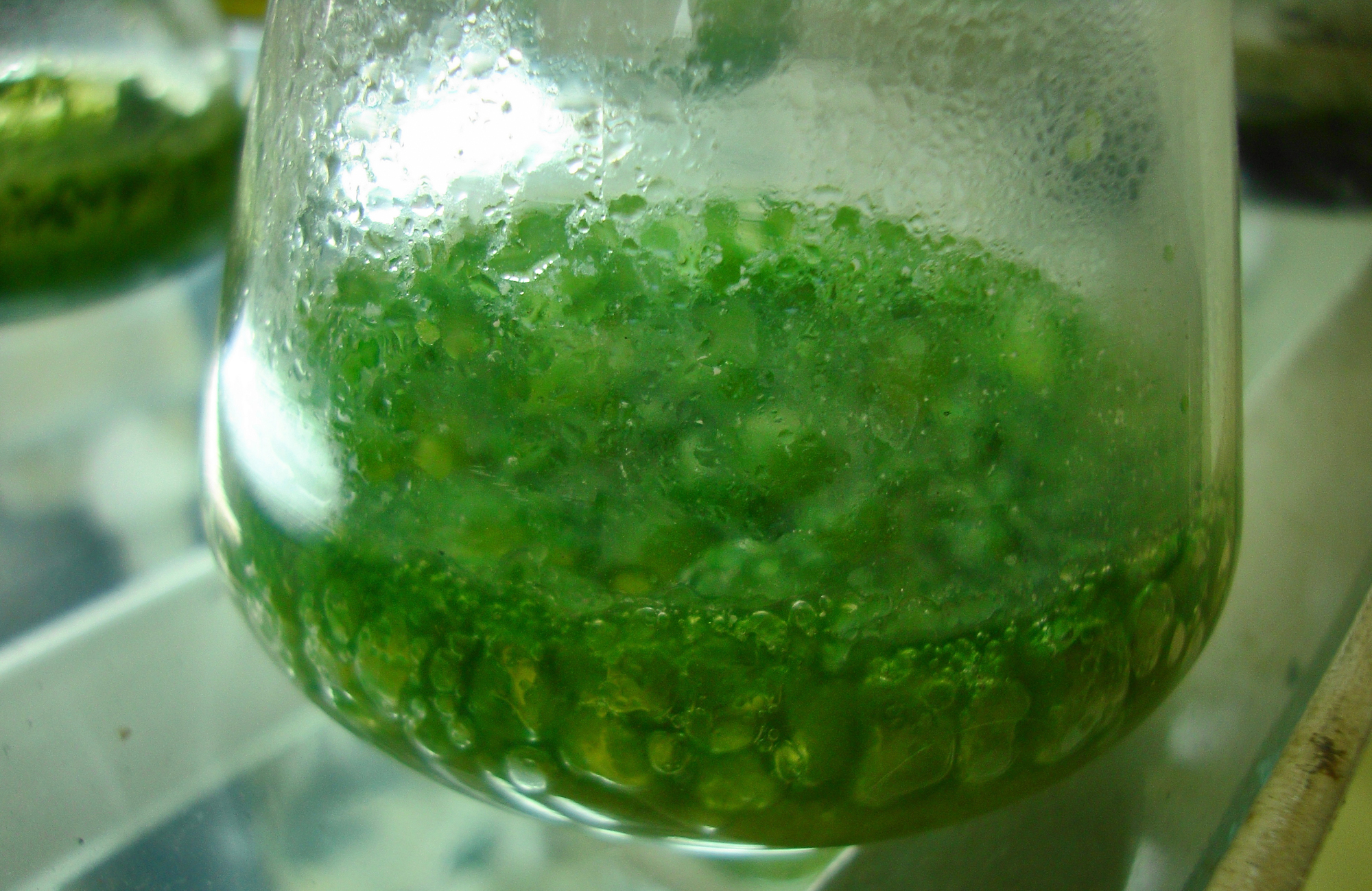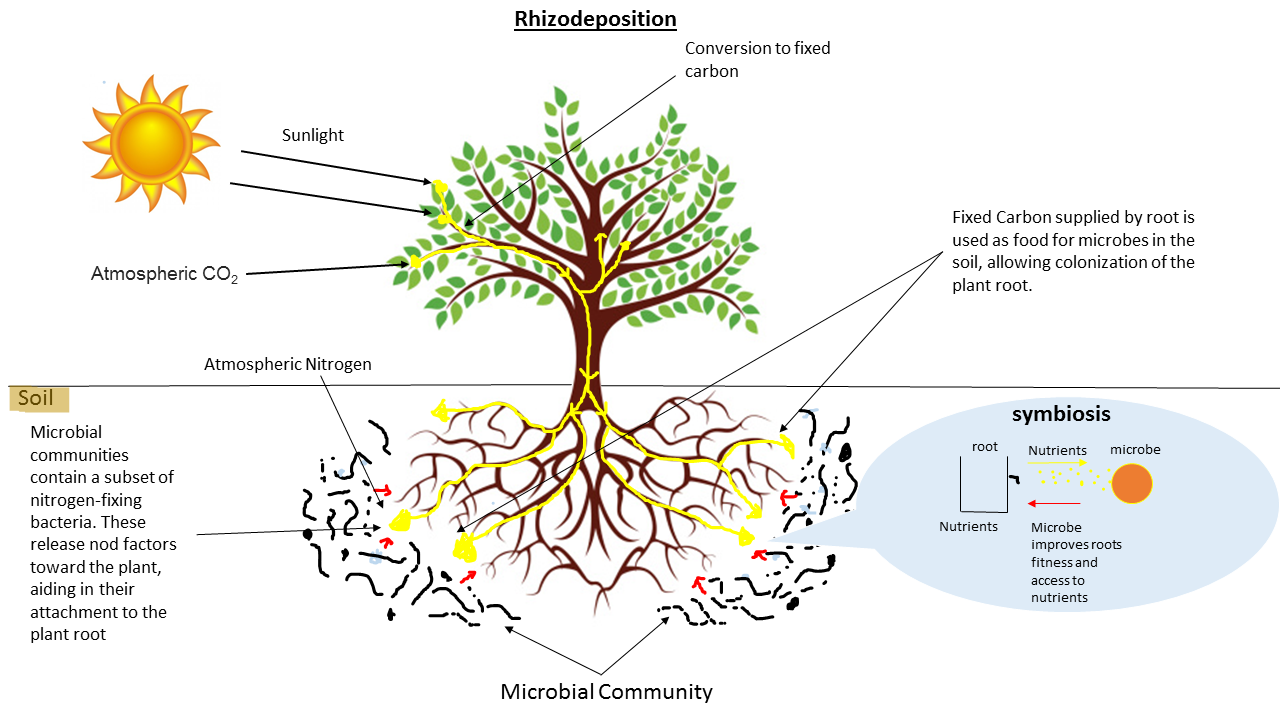|
Rhizobacteria
Rhizobacteria are root-associated bacteria that can have a detrimental (parasitic varieties), neutral or beneficial effect on plant growth. The name comes from the Greek ''rhiza'', meaning root. The term usually refers to bacteria that form symbiotic relationships with many plants ( mutualism). Rhizobacteria are often referred to as plant growth-promoting rhizobacteria, or PGPRs. The term PGPRs was first used by Joseph W. Kloepper in the late 1970s and has become commonly used in scientific literature. Generally, about 2–5% of rhizosphere bacteria are PGPR. They are an important group of microorganisms used in biofertilizer. Biofertilization accounts for about 65% of the nitrogen supply to crops worldwide. PGPRs have different relationships with different species of host plants. The two major classes of relationships are rhizospheric and endophytic. Rhizospheric relationships consist of the PGPRs that colonize the surface of the root, or superficial intercellular spaces of the h ... [...More Info...] [...Related Items...] OR: [Wikipedia] [Google] [Baidu] |
Soil Inoculant
Microbial inoculants also known as soil inoculants or bioinoculants are agricultural amendments that use beneficial rhizosphericic or endophytic microbes to promote plant health. Many of the microbes involved form symbiotic relationships with the target crops where both parties benefit ( mutualism). While microbial inoculants are applied to improve plant nutrition, they can also be used to promote plant growth by stimulating plant hormone production. Although bacterial and fungal inoculants are common, inoculation with archaea to promote plant growth is being increasingly studied. Research into the benefits of inoculants in agriculture extends beyond their capacity as biofertilizers. Microbial inoculants can induce systemic acquired resistance (SAR) of crop species to several common crop diseases (provides resistance against pathogens). So far SAR has been demonstrated for powdery mildew ( ''Blumeria graminis'' f. sp. ''hordei'', Heitefuss, 2001), take-all ( ''Gaeumannomyces grami ... [...More Info...] [...Related Items...] OR: [Wikipedia] [Google] [Baidu] |
Rhizosphere
The rhizosphere is the narrow region of soil or substrate that is directly influenced by root secretions and associated soil microorganisms known as the root microbiome. Soil pores in the rhizosphere can contain many bacteria and other microorganisms that feed on sloughed-off plant cells, termed ''rhizodeposition'', and the proteins and sugars released by roots, termed root exudates. This symbiosis leads to more complex interactions, influencing plant growth and competition for resources. Much of the nutrient cycling and disease suppression by antibiotics required by plants, occurs immediately adjacent to roots due to root exudates and metabolic products of symbiotic and pathogenic communities of microorganisms. The rhizosphere also provides space to produce allelochemicals to control neighbours and relatives. The ''rhizoplane'' refers to the root surface including its associated soil particles which closely interact with each other. The plant-soil feedback loop and other p ... [...More Info...] [...Related Items...] OR: [Wikipedia] [Google] [Baidu] |
Biofertilizer
A biofertilizer is a substance which contains living micro-organisms which, when applied to seeds, plant surfaces, or soil, colonize the rhizosphere or the interior of the plant and promotes growth by increasing the supply or availability of primary nutrients to the host plant. Biofertilizers add nutrients through the natural processes of nitrogen fixation, solubilizing phosphorus, and stimulating plant growth through the synthesis of growth-promoting substances. The micro-organisms in biofertilizers restore the soil's natural nutrient cycle and build soil organic matter. Through the use of biofertilizers, healthy plants can be grown, while enhancing the sustainability and the health of the soil. Biofertilizers can be expected to reduce the use of synthetic fertilizers and pesticides, but they are not yet able to replace their use. Since they play several roles, a preferred scientific term for such beneficial bacteria is "plant-growth promoting rhizobacteria" (PGPR). Biofertili ... [...More Info...] [...Related Items...] OR: [Wikipedia] [Google] [Baidu] |
Rhizosphere
The rhizosphere is the narrow region of soil or substrate that is directly influenced by root secretions and associated soil microorganisms known as the root microbiome. Soil pores in the rhizosphere can contain many bacteria and other microorganisms that feed on sloughed-off plant cells, termed ''rhizodeposition'', and the proteins and sugars released by roots, termed root exudates. This symbiosis leads to more complex interactions, influencing plant growth and competition for resources. Much of the nutrient cycling and disease suppression by antibiotics required by plants, occurs immediately adjacent to roots due to root exudates and metabolic products of symbiotic and pathogenic communities of microorganisms. The rhizosphere also provides space to produce allelochemicals to control neighbours and relatives. The ''rhizoplane'' refers to the root surface including its associated soil particles which closely interact with each other. The plant-soil feedback loop and other p ... [...More Info...] [...Related Items...] OR: [Wikipedia] [Google] [Baidu] |
Exudate
An exudate is a fluid emitted by an organism through pores or a wound, a process known as exuding or exudation. ''Exudate'' is derived from ''exude'' 'to ooze' from Latin ''exsūdāre'' 'to (ooze out) sweat' (''ex-'' 'out' and ''sūdāre'' 'to sweat'). Medicine An exudate is any fluid that filters from the circulatory system into lesions or areas of inflammation. It can be a pus-like or clear fluid. When an injury occurs, leaving skin exposed, it leaks out of the blood vessels and into nearby tissues. The fluid is composed of serum, fibrin, and leukocytes. Exudate may ooze from cuts or from areas of infection or inflammation. Types * Purulent or suppurative exudate consists of plasma with both active and dead neutrophils, fibrinogen, and necrotic parenchymal cells. This kind of exudate is consistent with more severe infections, and is commonly referred to as pus. * Fibrinous exudate is composed mainly of fibrinogen and fibrin. It is characteristic of rheumatic carditis, bu ... [...More Info...] [...Related Items...] OR: [Wikipedia] [Google] [Baidu] |
Legumes
A legume () is a plant in the family Fabaceae (or Leguminosae), or the fruit or seed of such a plant. When used as a dry grain, the seed is also called a pulse. Legumes are grown agriculturally, primarily for human consumption, for livestock forage and silage, and as soil-enhancing green manure. Well-known legumes include beans, soybeans, chickpeas, peanuts, lentils, lupins, mesquite, carob, tamarind, alfalfa, and clover. Legumes produce a botanically unique type of fruit – a simple dry fruit that develops from a simple carpel and usually dehisces (opens along a seam) on two sides. Legumes are notable in that most of them have symbiotic nitrogen-fixing bacteria in structures called root nodules. For that reason, they play a key role in crop rotation. Terminology The term ''pulse'', as used by the United Nations' Food and Agriculture Organization (FAO), is reserved for legume crops harvested solely for the dry seed. This excludes green beans and green peas, which ar ... [...More Info...] [...Related Items...] OR: [Wikipedia] [Google] [Baidu] |
Seed
A seed is an embryonic plant enclosed in a protective outer covering, along with a food reserve. The formation of the seed is a part of the process of reproduction in seed plants, the spermatophytes, including the gymnosperm and angiosperm plants. Seeds are the product of the ripened ovule, after the embryo sac is fertilized by sperm from pollen, forming a zygote. The embryo within a seed develops from the zygote, and grows within the mother plant to a certain size before growth is halted. The seed coat arises from the integuments of the ovule. Seeds have been an important development in the reproduction and success of vegetable gymnosperm and angiosperm plants, relative to more primitive plants such as ferns, mosses and liverworts, which do not have seeds and use water-dependent means to propagate themselves. Seed plants now dominate biological niches on land, from forests to grasslands both in hot and cold climates. The term "seed" also has a general me ... [...More Info...] [...Related Items...] OR: [Wikipedia] [Google] [Baidu] |
Plant Growth
Important structures in plant development are buds, shoots, roots, leaves, and flowers; plants produce these tissues and structures throughout their life from meristems located at the tips of organs, or between mature tissues. Thus, a living plant always has embryonic tissues. By contrast, an animal embryo will very early produce all of the body parts that it will ever have in its life. When the animal is born (or hatches from its egg), it has all its body parts and from that point will only grow larger and more mature. However, both plants and animals pass through a phylotypic stage that evolved independently and that causes a developmental constraint limiting morphological diversification. According to plant physiologist A. Carl Leopold, the properties of organization seen in a plant are emergent properties which are more than the sum of the individual parts. "The assembly of these tissues and functions into an integrated multicellular organism yields not only the characteristic ... [...More Info...] [...Related Items...] OR: [Wikipedia] [Google] [Baidu] |
Spermosphere
In plant science, the spermosphere is the zone in the soil surrounding a germinating seed. This is a small volume with radius perhaps 1 cm but varying with seed type, the variety of soil microorganisms, the level of soil moisture, and other factors. Within the spermosphere a range of complex interactions take place among the germinating seed, the soil, and the microbiome. Because germination is a brief process, the spermosphere is transient, but the impact of the microbial activity within the spermosphere can have strong and long-lasting effects on the developing plant. Seeds exude various molecules that influence their surrounding microbial communities, either inhibiting or stimulating their growth. The composition of the exudates varies according to the plant type and such properties of the soil as its pH and moisture content. With these biochemical effects, the spermosphere develops both downward—to form the rhizosphere (upon the emergence of the plant's radicle)—and u ... [...More Info...] [...Related Items...] OR: [Wikipedia] [Google] [Baidu] |
Motility
Motility is the ability of an organism to move independently, using metabolic energy. Definitions Motility, the ability of an organism to move independently, using metabolic energy, can be contrasted with sessility, the state of organisms that do not possess a means of self-locomotion and are normally immobile. Motility differs from mobility, the ability of an object to be moved. The term vagility encompasses both motility and mobility; sessile organisms including plants and fungi often have vagile parts such as fruits, seeds, or spores which may be dispersed by other agents such as wind, water, or other organisms. Motility is genetically determined, but may be affected by environmental factors such as toxins. The nervous system and musculoskeletal system provide the majority of mammalian motility. In addition to animal locomotion, most animals are motile, though some are vagile, described as having passive locomotion. Many bacteria and other microorganisms, and multicellu ... [...More Info...] [...Related Items...] OR: [Wikipedia] [Google] [Baidu] |
Root System
In mathematics, a root system is a configuration of vectors in a Euclidean space satisfying certain geometrical properties. The concept is fundamental in the theory of Lie groups and Lie algebras, especially the classification and representation theory of semisimple Lie algebras. Since Lie groups (and some analogues such as algebraic groups) and Lie algebras have become important in many parts of mathematics during the twentieth century, the apparently special nature of root systems belies the number of areas in which they are applied. Further, the classification scheme for root systems, by Dynkin diagrams, occurs in parts of mathematics with no overt connection to Lie theory (such as singularity theory). Finally, root systems are important for their own sake, as in spectral graph theory. Definitions and examples As a first example, consider the six vectors in 2-dimensional Euclidean space, R2, as shown in the image at the right; call them roots. These vectors Linear span, s ... [...More Info...] [...Related Items...] OR: [Wikipedia] [Google] [Baidu] |





